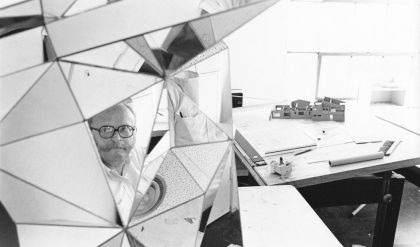Introduction The conception of Postmodernism is a movement in culture, philosophy, art and many other things. There are different ways to use this term at different times, but still there are some similarities. Postmodernism says that there is no real truth. Postmodernism was first commonly used in the 1949 to talk about modern architecture and changes which took place in art. There was a feeling of negation among people many people against modern architecture because it had too many box-like shapes and people did not think it was pretty. So just to avoid this complex structure they started the postmodern architecture movement (Perry, 1998) . Postmodern architecture is the architecture which focuses on the surface ornamentation, often based on historical styles, and less boxlike shapes. All these ideas related to postmodernism can be seen in philosophy, on the various portions of the society and the impact of it can be felt on the study of culture and society, literature, architecture, design, as well as in history and law. Postmodernism also led people to think differently about love, marriage, popular culture, and the change in much of the Western world from an industrial to service economy. Post modernity usually means the period in the history of time when postmodern ideas became common (the second half of the 20th century). (Anderson, 1990) Some experts think that postmodernism is now over, especially in literature (David, 1988) . On the wider level it was the movement which reacted against the established modern movement and revolted against the modern concepts which were prevailing in the society at that time. Postmodernism aims at the idea of truth which was earlier didn’t exist in the society, but contemporary idea of truth is multi-factious. In different things and think it is the truth and all is right. Postmodernism emphasise on the point that one should not try to make others to believe what he believes, because it doesn’t mean anything to say that one belief is right and the other is wrong. It says if someone believes and tries to make somebody else believe it also, it means that they are just trying to gain power and hegemony. From the beginning of 18th century the age of Enlightenment and into the early 20th century, many people had the belief that science and new knowledge would make the world better for them and they were hoping for a change in their life.
They strongly believed that whenever scientists or philosophers discovered something new, it is for the humanity and it inevitably make society a little bit better. This makes it clear with the invention of the new technology during the Industrial Revolution, allowing people to have more household gazettes such as from cars to washing machines. Many people believed that this social change can’t be stopped because different people have different opinion about what social progress is. Whereas, the Industrial Revolution helped many on the other hand it harmed many. Postmodernism holds that while some things about the world change, people only want to believe that the earlier world, where they were residing was better than it is. With this advancement they were not changing themselves because they think there is no ‘better’. They were expecting to happen something dignified for them. They were simply dazzling between the terms ‘better’. Postmodernism says that peoples’ opinions cannot change, and in the same way one person’s opinion cannot be changed, it means one work of art is better than any other. Postmodern period was a revolution in the field of art and literature. Art and literature commonly talks about it and makes fun of it. It makes fun of ‘serious’ art and even the very idea of art. The impact of postmodernism can be seen on the many cultural fields, including literary criticism, philosophy, sociology, linguistics, architecture, visual arts, and music. It can be viewed in several ways. Postmodernism movement was a strong reaction to the modern architecture developed after World War I. It became a philosophy afterwards, which as a social theory followed the task of reacting to all the modern concepts of the philosophy. Postmodernist movement is also seen as a question of
representation and the usage of language, relationship between modern and postmodern unconsciousness. One major belief was that the postmodernist view in exploring the universal and grand theories, which were very much in the demand in the modern period. Postmodernism simply focuses on the differentiation while discounting positions of theoreticians. The modernist movement masked itself in a world of rationality and objectivity from the context of postmodernism, thereby, these all other perspectives confine to irrationality and subjectivity. According to Warf (1995, p.186), most of the modernist approaches have left little room for human consciousness or historical contingency. Postmodernism, which emerged as one of these new philosophies, has become, as Harvey (1989, p.39) states, a concept to be wrestled with, such a battleground of conflicting and political ideas that cannot be ignored. The beginning of the new domain is attributed to Lyotard and Jameson, who championed the belief that all modernist meta-narratives are based on trans-historical, universal truths. However, Warf (1993, p.163) contends that the endeavour to offer one worldview should not be included in the postmodern perspective. Rather than thinking in terms of an absolute, and one clear and coherent “center”, postmodernism urges taking into account disorder, incoherence, and chaos when attempting to determine why certain events occur. As applied to the social principles, postmodernism longs for a great sensitivity to the “dichotomies” which were existed in all sorts of ways both obvious and subtle (Cloke, Philo and Sadler, 1991, p.171). The main focus here is on attentiveness to the many differences that distinguish one phenomenon, event, or process from one another based on a request for not obliterating these vital differences in the force of theories (Cloke, Philo and Sadler, 1991, p. 171) . Warf (1990, p.588) takes stringent issue with postmodernists’ inability to articulate a viable substitute for modernism. In addition, Warf (1990, p.588) asserts that postmodernism is not a new “paradigm”; it is opposed to all paradigms. He opines that postmodernism focuses on differences, not similarities; uncertainty, not certainty; ephemerality, not permanence; the contradictions, substance rather than silent discourses. Postmodernism proposes some vital perspectives on questions such as of social structure, meaning, epistemology, language and progress. The concept of postmodernism which presents the picture of reality is very different from that of modernism. Postmodernism denies the concept of practicality of universe of modernism, while the idea that reality is far more complicated than modernist theoreticians believe. Postmodernists believe that no grand language can easily distinguish the notion of complexity of reality, and no theory can capture the complexities and messiness of societies (Warf, 1990, p.590). Postmodernist perspective holds that positivist science has traditionally been reductionist in the attempts to explain complex systems. This view of postmodernism eliminates the oversimplification of complexities of social structures. Modernists claim objectiveness of the research process which is a false one because knowledge is socially.webpted and people view the world through their subjective experiences. Thus, the overall goal of the postmodernism is to admit their subjectivity, incompleteness, and partialness of perspectives. So in the broader sense postmodernism is a new domain and revolutionary notion in philosophy that takes it into account the multiplications of ideas and notions. Postmodern theorists in forming narratives emphasize problems related to language and representation, which can include among other things, narratives, texts, symbolic forms, hermeneutics, and the assumption of social and analysis (Barnes and Duncan, 1992). Ultimately, postmodernism at the grass root level explorations of dichotomies rather than analogies. So, here the concept of the world having coherent order is summarily dismissed.
Conclusion
So, on the whole postmodernism beholds the subject as contradictory and multilayered, and rejects the perception that individual consciousness and reason are the most important inducements in shaping history of human civilization. It conceives faith in forms of societal transmutation that understand the historical, structural, and ideological limits that shape the possibility for self-reflection and action. Postmodernism on the whole in the world of philosophy is a movement, which is reacting against modernity. But this philosophy focuses on exaggeration in solving the problems of modernism. In this way, it reforms the past problem, it is more powerful, but when it corrects the problem, it reveals the problems of past to us. Postmodernists have been completely excluded from mainstream philosophy because the traditional concern of philosophy was nowhere reflected in their philosophy. It is also undeniable fact that postmodernism is the most discouraging philosophy that originated from the western mind. To talk about postmodernism is really a difficult task because nobody can confidently say that they have understood it accurately. In nut shell, postmodern is a position, which was so doubtful for all the existing principles. But it is quite obvious that it doubts on established principles. Postmodernism offers a series of referents for rethinking how we are constituted as subjects within a rapidly changing set of political, social, and cultural conditions.





Comments are closed.